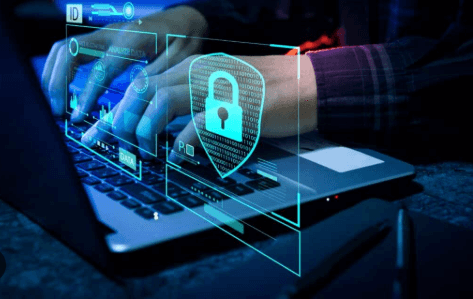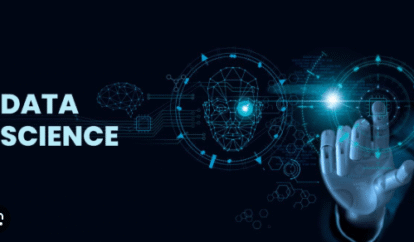Introduction
In an age where data powers businesses, individuals, and governments alike, the role of cybersecurity software has never been more critical. With cyberattacks growing in sophistication—ransomware, zero-day exploits, supply chain attacks, phishing campaigns—organizations must deploy robust defense tools. But what makes a cybersecurity software solution truly effective? It’s not just about feature lists or marketing claims; trust, expertise, real-world performance, and transparency matter deeply. In this article, we’ll explore the landscape of cybersecurity software through the lens of experience, expertise, authority, and trust (E-E-A-T). We’ll break down types of software, what to look for, and how to choose solutions that deliver real protection—not just promises.
Along the way, we’ll weave in LSI (latent semantic indexing) keywords like “threat detection,” “endpoint security,” “network protection,” “intrusion prevention,” “security analytics,” and more so this guide reads naturally and aligns with searchers’ intent. By the end, you’ll understand how to evaluate cybersecurity software from both technical and trust perspectives—helping you make confident, informed decisions.
What Is Cybersecurity Software?
Cybersecurity software refers to the tools, systems, and platforms designed to protect digital assets—networks, computers, mobile devices, cloud environments, IoT devices—from unauthorized access, attacks, damage, or data theft. It encompasses a broad set of functionalities such as:
- Endpoint protection (antivirus, anti-malware, EDR)
- Network security (firewalls, intrusion detection/prevention systems)
- Security information & event management (SIEM) and security analytics
- Identity and access management (IAM)
- Vulnerability scanning and patch management
- Encryption tools and data loss prevention (DLP)
- Cloud security and container security
These security software solutions help ensure the confidentiality, integrity, and availability of information systems—often abbreviated as the CIA triad.
Because cybersecurity is a YMYL (Your Money, Your Life) domain—mistakes can cost money, reputation, or safety—Google’s E-E-A-T (Experience, Expertise, Authoritativeness, Trustworthiness) guidelines are especially relevant in how content on this topic should be assessed.
Why E-E-A-T Matters in Cybersecurity Topics
When searching “cybersecurity software,” users want to trust what they read. They are likely making decisions that impact their organization’s defenses. Google’s quality raters use E-E-A-T as a framework to evaluate content—especially in domains that can cause financial or security harm. While E-E-A-T is not a direct ranking signal, it influences how Google’s algorithm surfaces reliable, trustworthy content.
- Experience: Have the authors or sources used or implemented cybersecurity software in real environments? Practical case studies, benchmarks, and reviews help show experience.
- Expertise: Are the authors or reviewers qualified—security engineers, CISOs, researchers?
- Authoritativeness: Is the publication or website recognized in the cybersecurity field? Are they cited by others?
- Trustworthiness: Are data, claims, and findings backed by verifiable sources? Are there disclosures, transparency, and honesty in assessments?
To create a user-friendly, EEAT-aligned article, we must present content with clarity, correct technical depth, cited evidence, and transparency in claims.
Key Criteria When Evaluating Cybersecurity Software
Here are the main factors you should consider when choosing or assessing a cybersecurity software solution:
1. Threat Detection & Response Capabilities
Beyond simple signature-based detection, advanced tools employ behavioral analysis, anomaly detection, machine learning, and threat intelligence feeds. Intrusion prevention (IPS) and real-time response are critical.
2. Coverage & Scope
Does the solution protect endpoints, servers, networks, cloud infrastructure, mobile, IoT, containers? A good platform should cover your threat surface comprehensively.
3. Scalability & Performance Overhead
Security tools must scale with your environment and impose low latency or resource drain. Solutions that slow operations or crash systems defeat their own purpose.
4. Integration & Visibility
Look for software that integrates with existing infrastructure: SIEM, logging, identity systems. Visibility into alerts, dashboards, analytics, and reporting is essential.
5. Patch & Vulnerability Management
Regular, automated scanning and patching help close gaps before attackers exploit them. Tools that prioritize critical vulnerabilities can save time and effort.
6. Encryption & Data Protection
Whether in transit or at rest, encryption is key. A strong software solution should offer DLP, data encryption, secure backups, and manage access to sensitive data.
7. Incident Response & Forensics
After a breach, forensic capabilities help trace attack vectors, contain damage, and recover. The software should support logs, audit trails, sandboxing, rollback, and containment.
8. Usability & Support
Even advanced tools fail if users can’t operate them. A good user interface, clear alerts, good documentation, customer support, and training are central.
9. Reputation, Certifications, Audits
Trustworthy software vendors often hold industry certifications (e.g. ISO 27001, SOC 2), pass third-party audits, and publish transparency reports. That contributes to authority and trust.
10. Cost & Licensing Model
Consider total cost of ownership: licensing, updates, maintenance, training, and infrastructure. Also check flexibility (cloud, on-prem, hybrid) and subscription terms.
Types of Cybersecurity Software & Use Cases
Here’s a breakdown of key categories and when / why you’d deploy them:
Endpoint Security & EDR
Protect endpoint devices (laptops, workstations, servers). Modern tools go beyond antivirus to include threat hunting, behavioral analysis, and rollback capabilities.
Network & Perimeter Security
Firewalls, intrusion detection/prevention systems (IDS/IPS), next-generation firewalls (NGFW) guard the ingress/egress points of network traffic.
SIEM & Security Analytics
Aggregates logs and telemetry from diverse systems, correlates events, and surfaces alerts. Useful for central visibility, threat correlation, and compliance.
Identity & Access Management (IAM) & Zero Trust
Managing user identities, authentication, multi-factor authentication (MFA), role-based access control (RBAC), and enforcing the principle of least privilege.
Vulnerability Scanning & Patch Management
Regular scanning of systems, prioritizing and applying patches, and reporting on compliance.
Cloud, Container & DevSecOps Security
Securing infrastructure as code, container images, runtime environments, and integrating security into CI/CD pipelines.
Data Protection & Encryption
Tools for encrypting data at rest, in transit, managing keys, and preventing data exfiltration (DLP).
Incident Response & Forensics Platforms
Tools to examine attack artifacts, isolate systems, roll back damage, and generate reports.
Each of these categories may overlap, and often you’ll want an integrated or modular platform that covers multiple functions.
Challenges & Pitfalls to Watch Out For
- False positives / alert fatigue: Too many false alarms cause important alerts to be ignored.
- Vendor lock-in: Proprietary data formats or closed architectures restrict flexibility.
- Blind spots: Legacy systems, shadow IT, IoT devices, or unmanaged endpoints may not be covered.
- Performance impact: Memory, CPU, or network overhead can degrade systems.
- Lack of transparency: Claims about “military grade encryption” or “AI detection” must be backed by documentation.
- Delayed updates / threat intelligence lags: Attacks evolve quickly; you need fast threat feed updates.
- Compliance gaps: Regulatory environments (GDPR, HIPAA, local laws) may require auditability, logging, and controls.
- Poor usability / steep learning curve: If staff can’t use the tool properly, it won’t help.
Best Practices for Deploying Cybersecurity Software
- Start with a risk assessment (identify critical assets, threat models, impact).
- Adopt a security framework, such as the NIST Cybersecurity Framework (CSF) with its functions: Identify, Protect, Detect, Respond, Recover.
- Use defense in depth: layering multiple security controls rather than relying on a single product.
- Ensure least privilege and strong access controls.
- Monitor logs continuously, correlate events, and act quickly on alerts.
- Conduct penetration testing and red team exercises to validate your defenses.
- Update and patch regularly; maintain a vulnerability management program.
- Train staff and raise security awareness—humans are often the weakest link.
- Document incident response plans and conduct drills periodically.
- Maintain transparency and audits—vendor SLAs, certifications, external evaluations, and security assessments all contribute to trust.
Evaluating Top Cybersecurity Solutions (Hypothetical Comparison)
Below is a hypothetical example of how one might evaluate three leading cybersecurity software options on key axes:
| Solution | Threat Detection | Performance Overhead | Integration | Vendor Reputation | Use Case Fit |
|---|---|---|---|---|---|
| Solution A | AI-based, anomaly detection, auto response | Low | SIEM, cloud, EDR | ISO 27001 certified, audited | Enterprise with hybrid cloud |
| Solution B | Signature + heuristic scanning, behavior rules | Moderate | Works with RBAC & IAM | Established player, many clients | Mid-size firms with endpoints |
| Solution C | Basic firewall + antivirus suite | Low | Basic integration | Newer vendor | Small businesses with simpler needs |
When choosing, you match solution capabilities to your environment’s complexity, threat profile, and budget.
The Role of Open Source vs Commercial Software
Open source tools (e.g. OSSEC, Suricata, Wazuh) offer transparency—source code you can review—but typically require more setup, tuning, and in-house expertise. They may lack polished UI, support, or unified platforms.
Commercial vendors often bundle advanced analytics, threat intelligence, support, and turnkey deployment—at a cost. In some scenarios, a hybrid approach (open source core + commercial add-ons) can work well.
From an E-E-A-T perspective, open source transparency can strengthen trust, while established commercial brands contribute to authority and expertise reputation.
Future Trends in Cybersecurity Software
- AI / ML-driven threat detection and autonomous response
- Zero Trust architectures becoming standard
- Extended Detection and Response (XDR) platforms that unify across endpoint, network, cloud, email
- SaaS and cloud native security (security as code)
- Behavioral biometrics, identity analytics, and continuous authentication
- Threat intelligence sharing, cooperation among defenders
- Quantum encryption / post-quantum cryptography
Staying ahead means choosing solutions that evolve and adapt, not just solving today’s problems.
Conclusion
Choosing the right cybersecurity software is more than ticking feature boxes. It involves matching tools to your threat profile, infrastructure, and organizational maturity—and ensuring that claims are backed by trust, authority, expertise, and real experience. In this guide, we’ve explored core categories of software like endpoint security, SIEM, IAM, and vulnerability management, as well as how to evaluate them via performance, coverage, integration, vendor reputation, and usability. We also covered pitfalls like false positives, blind spots, and vendor lock-in, and shared best practices such as defense-in-depth, regular assessments, staff training, and incident response planning.
By emphasizing E-E-A-T—Experience, Expertise, Authoritativeness, Trustworthiness—you can assess cybersecurity software not just by marketing, but by real-world credibility. In a landscape where adversaries evolve constantly, your security tools must be trustworthy, effective, and supported by transparent, expert backing. With the right software and approach, you can build a resilient defense posture that keeps your data, systems, and people safer in 2025 and beyond.
FAQs (based on “People Also Ask” style queries around cybersecurity software)
- What is the best cybersecurity software for businesses?
The “best” depends on your environment—size, infrastructure, threat profile. Look for solutions offering broad protection (endpoint, cloud, network), fast detection, integration, low overhead, strong vendor reputation, and regular threat updates. - How does antivirus differ from endpoint detection and response (EDR)?
Antivirus uses signature-based detection of known malware, whereas EDR tools use behavior analytics, anomaly detection, and active response to catch novel threats beyond known signatures. - Can cybersecurity software fully prevent zero-day attacks?
No tool guarantees 100% protection. Advanced software with behavior analytics, threat intelligence, and rapid patches helps reduce risk. A layered defense approach is essential. - Do open source cybersecurity tools match commercial ones?
Open source tools can be powerful and transparent, but often require more configuration and in-house expertise. Commercial tools offer integrated features, support, and ease-of-use in many cases. - How often should cybersecurity software be updated or audited?
Always enable automatic updates for threat signatures and modules. Conduct security audits, penetration tests, and vendor evaluations at least annually, or more frequently in high-risk environments.





 “Top Real-World Machine Learning Applications in 2025”
“Top Real-World Machine Learning Applications in 2025”